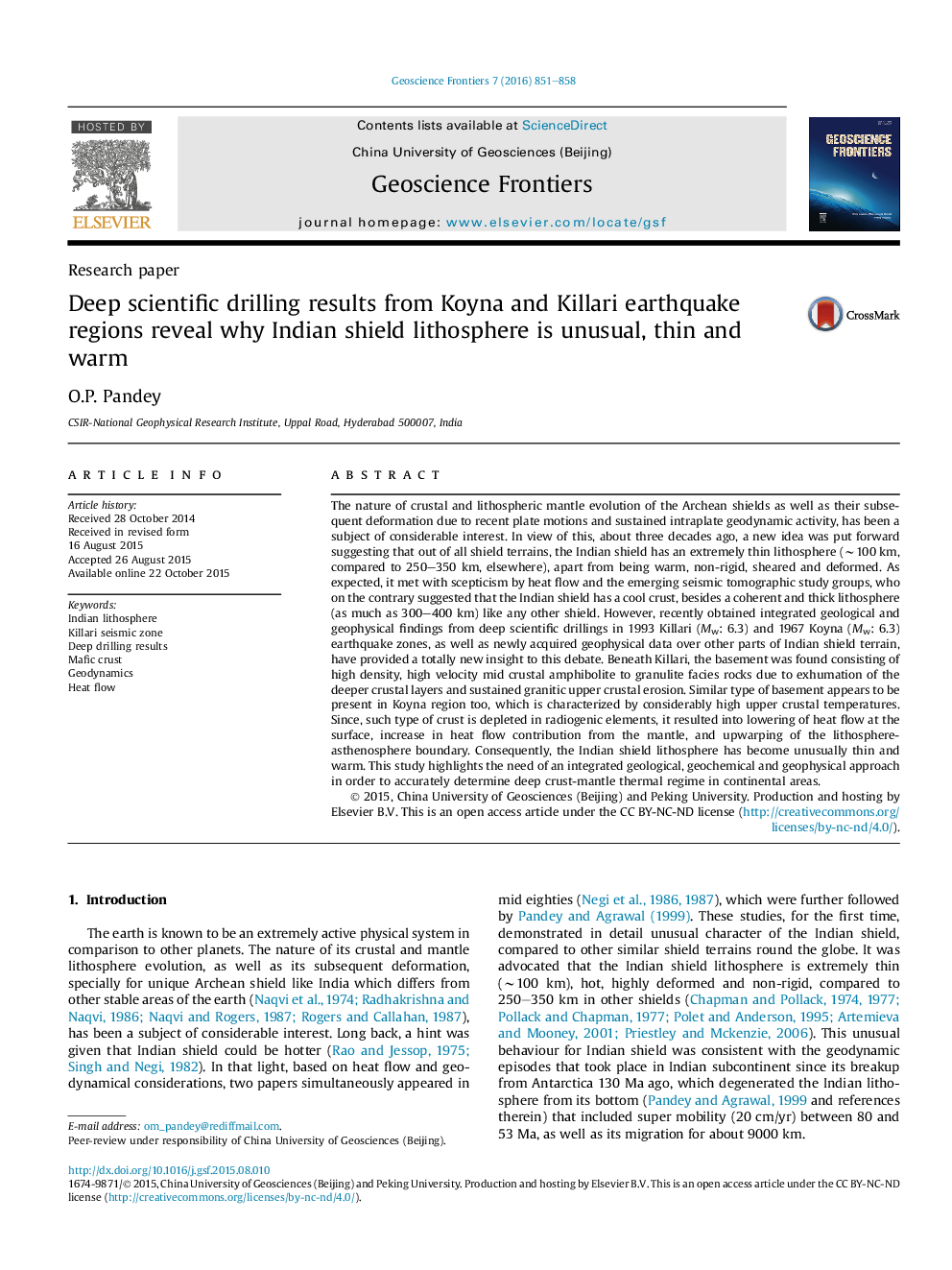| کد مقاله | کد نشریه | سال انتشار | مقاله انگلیسی | نسخه تمام متن |
|---|---|---|---|---|
| 4681484 | 1348852 | 2016 | 8 صفحه PDF | دانلود رایگان |
• Thickness of Indian lithosphere remains enigmatic.
• Identification of mafic crust exhumation below Deccan Volcanic Province.
• New insights on surface heat flow, and depth to LAB.
The nature of crustal and lithospheric mantle evolution of the Archean shields as well as their subsequent deformation due to recent plate motions and sustained intraplate geodynamic activity, has been a subject of considerable interest. In view of this, about three decades ago, a new idea was put forward suggesting that out of all shield terrains, the Indian shield has an extremely thin lithosphere (∼100 km, compared to 250–350 km, elsewhere), apart from being warm, non-rigid, sheared and deformed. As expected, it met with scepticism by heat flow and the emerging seismic tomographic study groups, who on the contrary suggested that the Indian shield has a cool crust, besides a coherent and thick lithosphere (as much as 300–400 km) like any other shield. However, recently obtained integrated geological and geophysical findings from deep scientific drillings in 1993 Killari (Mw: 6.3) and 1967 Koyna (Mw: 6.3) earthquake zones, as well as newly acquired geophysical data over other parts of Indian shield terrain, have provided a totally new insight to this debate. Beneath Killari, the basement was found consisting of high density, high velocity mid crustal amphibolite to granulite facies rocks due to exhumation of the deeper crustal layers and sustained granitic upper crustal erosion. Similar type of basement appears to be present in Koyna region too, which is characterized by considerably high upper crustal temperatures. Since, such type of crust is depleted in radiogenic elements, it resulted into lowering of heat flow at the surface, increase in heat flow contribution from the mantle, and upwarping of the lithosphere-asthenosphere boundary. Consequently, the Indian shield lithosphere has become unusually thin and warm. This study highlights the need of an integrated geological, geochemical and geophysical approach in order to accurately determine deep crust-mantle thermal regime in continental areas.
Figure optionsDownload as PowerPoint slide
Journal: Geoscience Frontiers - Volume 7, Issue 5, September 2016, Pages 851–858
